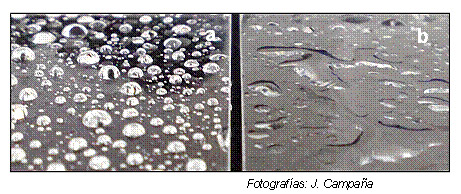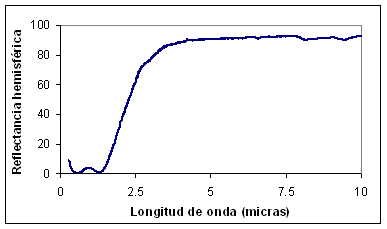

MATERIALS FOR CONCENTRATING SOLAR THERMAL TECHNOLOGIES
Low-cost absorber tubes
Participants: CIEMAT-PSA, ABENGOA Solar (ES)
Contact: Angel Morales, angel.morales@ciemat.es
Budget: 750,000 €.
Duration: December 2004 – December 2008
Background: One of the most important elements of the parabolic-trough collector is the absorber tube, since that is where the concentrated solar radiation is converted into thermal energy. Due to its high technology, only two vacuum absorber tube manufacturers, Schott and Solel, currently market this type of solar collector. Because of the scant offer, both the price and the delivery period for these tubes are currently a serious barrier to rapid commercial development of solar thermal power plants with parabolic-trough collectors. Therefore, the development of new absorber tubes with a high quality/price ratio is of interest and very attractive. CIEMAT has been working on the development of anti-reflective (AR) and selective coatings for use on this type of absorber tube, and has already patented several.
Purpose: Develop new absorber tubes for parabolic-trough collectors, both with (for solar thermal power plants) and without vacuum (for moderate working temperatures) based on the Sol-gel technology developed by CIEMAT for selective and anti-reflective (AR) coatings.
Achievements in 2007: The activities and achievements in this Project in 2007 are described below classified into two areas: AR films for glass and selective absorbers.
AR films for glass covers
In 2007, we continued evaluating and optimizing the durability of antireflective films for their application to borosilicate-glass parabolic-trough collector tubes and solar glass for flat collector covers. Different hydrophobic surface treatments were studied, and solar transmittance of borosilicate-glass samples after exposure to outdoor conditions for over thirteen months was found to be over 0.96. Solar glass with a single coating had a transmittance of 0.945. This difference is because borosilicate glass has a solar transmittance of 0.91 to start with, while for solar glass it is only 0.89.
Thermal treatment conditions for film densification have also been optimized. Temperatures of 500ºC for 15 minutes are enough to achieve AR films with optimal properties. This short thermal treatment time will facilitate transfer of the process to industrial scale, since it considerably shortens the coating preparation time.
Finally, the effect of environmental dirt (pollution, dust, etc.) was studied in samples exposed to outdoor conditions. Solar transmittance diminished between 1% and 3% due to the effect of dirt, which would slightly lower its efficiency.
High-temperature-selective absorbers
In 2007, the optical properties and durability of the high-temperature-selective absorber were optimized and work was mostly on perfecting a pilot plant for preparing 50-cm-long tubes with the same diameter as the receiver tubes currently used in commercial parabolic-trough collector plants, followed by preliminary tube preparation tests.

The high-temperature-selective absorber has a solar absorptance of 0.96 and thermal emissivity at 400ºC of 0.11 and 0.13 at 500ºC, considerably lower than those of commercial tubes manufactured by Schott and Solel.
